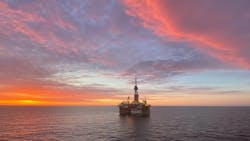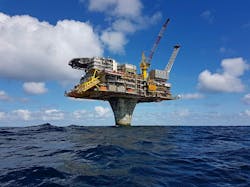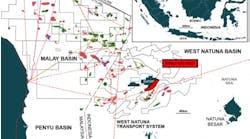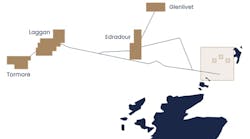Offshore staff
The collaborative project should cut offshore emissions by up to 330,000 metric tons annually.
OKEA will have responsibility for developing the power infrastructure from shore to Draugen, while Equinor will be responsible for the cable from Draugen to Njord and modifications and upgrades on Njord A. Here, the two existing gas turbines for main power production will be replaced by electric power supplied from shore via Draugen.
OKEA also has applied for an extension of the Draugen license through 2040, noting that electrification of the Draugen platform should make development of future resources in the area more appealing.
Draugen and Njord will require up to 80 MW annually, to be supplied through a connection to the power grid at Tensio's transformer station at Straum in Åfjord municipality, which has an annual capacity of 200 MW. Statnett assesses the connection as operationally sound with no need for reinforcements of the power grid.
Via this measure, about 60% of Njord A’s power will be covered by electricity, while the Njord Bravo FSO will be fully electrified.
Aker Solutions has a Letter of Intent with OKEA for the Draugen project and associated platform modifications. The company expects this to be converted to a full EPCI award in first-quarter 2023. OKEA has awarded the cable contract to NKT.
Overall investments are estimated at about NOK7.3 billion (US$749 million), of which NOK3 billion (US$308 million) covers the scope related to Njord. The entire project should be completed in first-quarter 2027.
Trond Bokn, Equinor’s senior vice president for project development, said, “Njord A and the Njord Bravo FSO returned to the field this autumn after extensive upgrading and will soon be ready for 20 more years of production and value creation. We are now continuing the modernization of Njord by converting to electric operation.”
Electrification of Njord will also benefit the Hyme, Bauge and Fenja tieback fields, part of the Njord Future project.
Njord is 30 km west of Draugen and 130 km northwest of Kristiansund in 330 m of water. The field came onstream in September 1997. Produced oil is transported by pipeline to the Njord Bravo FSO, and from there by tankers to the market.
Gas is exported through a 40-km pipeline connected to the Åsgard transport system, which terminates at the Kårstø terminal.
12.15.2022




